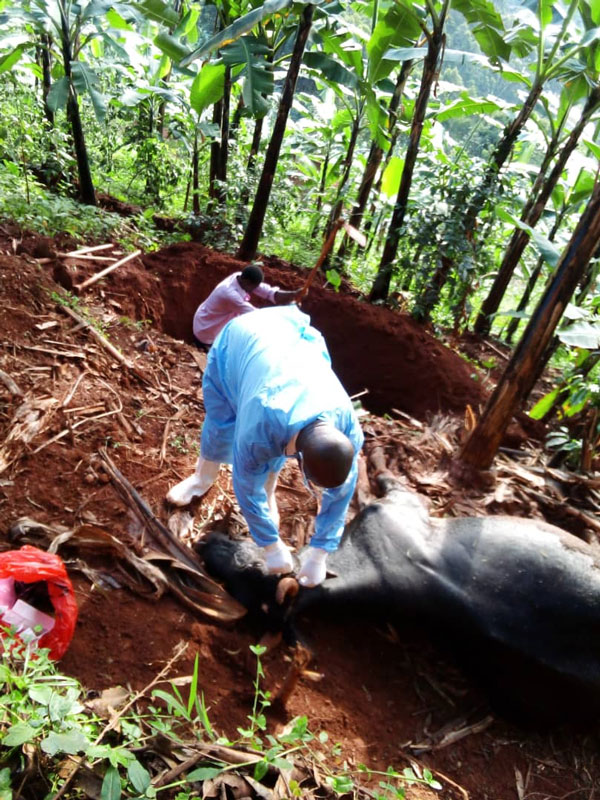
Ibanda, Uganda | THE INDEPENDENT | Five people in Ibanda district are hospitalized after consuming meat suspected to be contaminated with anthrax. The five patients admitted to Ibanda Hospital are residents of Rugaaga I&IV in Rugaaga, and Rwensambya village in Keihangara sub-counties.
Anthrax is a non-contagious zoonotic disease caused by the spore-forming bacterium Bacillus anthracis. It is common in wild and domestic animals such as cattle, sheep, goats, camels, and antelopes. In humans, anthrax may occur after contact with contaminated carcasses or animal products like milk and meat.
Vincent Mugisha, the Ibanda District Surveillance Officer, says that they received information from the in-charge of Kicence Health Center III about two people presenting with symptoms of anthrax. He says that three more cases were reported at Keihagara Health Center with similar symptoms.
Mugisha explained that they collected blood samples from animals and the affected individuals and dispatched them for testing to confirm the presence of anthrax. If the disease is confirmed, Mugisha explained that it might have originated from Kiruhura, a district with which they share animal markets and grazing farms. Kiruhura shares a border with Lake Mburo National Park.
Godard Serushuba, the LC I Chairperson of Rugaaga IV Cell, revealed that the affected individuals had consumed the meat of cows that died without exhibiting any signs of illness. Meat dealers purchased the carcasses inexpensively and transported them to other sub-counties, where they sold the meat at a low price. Subsequently, those who consumed the meat developed skin sores and experienced vomiting.
****
URN
 The Independent Uganda: You get the Truth we Pay the Price
The Independent Uganda: You get the Truth we Pay the Price




Anthrax
Survives in living and resting stage
The resting stage survives for a long time
Eaten as it settles by animals that get infected. Resting stage changes to active living form and multiplies
Man gets three forms if disease;
May gets tthrogh skin of man if he gets into contact, eats it or breathes it in
This current outbreak should be used to increase awareness in the community
Need to make instruction for animals die of unknown cause
The instructions of handling dead animals could include burial ( deep+ lime) or incineration
These could be supervised by local leadership and technical team
Otherwise, the resting phase hangs around settles on vegetation, to be eaten again by snimals
A challenge:
(a)he disease is associated with swelling, does that meat look normal to those who buy it
(b) At the time of death the active forms are very many in the blood, meaning contamination goes beyond the carcass
From areas soiled by blood the change to resting forms that survive for long
These two would call for enhanced awareness at local level